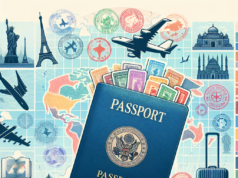In recent years, global migration has reached unprecedented levels, reshaping the demographic and socio-economic landscapes of nations worldwide. As millions of individuals and families embark on journeys across borders, the implications of this alarming surge are profound and multifaceted. This article delves into the current trends in global migration, the factors driving these movements, the impacts on host nations, the challenges faced by migrants, policy responses, and future predictions for migration patterns.
Understanding the Current Landscape of Global Migration: Key Statistics and Trends
The latest data from the United Nations indicates that over 281 million people were living outside their country of birth in 2020, a figure that has continued to rise. This represents approximately 3.6% of the global population, a significant increase from previous decades. Notably, the number of international migrants has grown by 128% since 1990, with the majority residing in high-income countries. The COVID-19 pandemic has further complicated migration patterns, leading to temporary declines in movement but also highlighting the resilience of migrant communities. As borders reopen, trends indicate a resurgence in migration, particularly among refugees and asylum seekers fleeing conflict and persecution.
Factors Driving the Alarming Surge in Global Migration: A Comprehensive Analysis
Several interrelated factors contribute to the current surge in global migration. Economic disparities between nations remain a primary driver, as individuals seek better employment opportunities and living conditions. Political instability, armed conflicts, and human rights violations in regions such as the Middle East and Africa have forced millions to flee their homes. Additionally, climate change is increasingly recognized as a significant factor, with natural disasters and environmental degradation displacing populations. The interplay of these factors creates a complex landscape where individuals are compelled to migrate, often risking their lives in the process.
The Impact of Migration on Host Nations: Economic, Social, and Cultural Dimensions
The influx of migrants into host nations has profound economic, social, and cultural implications. Economically, migrants often fill labor shortages, contribute to innovation, and stimulate local economies through consumption and entrepreneurship. Socially, however, migration can lead to tensions, particularly in communities unprepared for rapid demographic changes. Culturally, migrants enrich host societies by introducing diverse perspectives, traditions, and cuisines, fostering multiculturalism. However, the challenge lies in balancing these benefits with the need for social cohesion and integration, which can be strained in times of economic uncertainty.
Challenges Faced by Migrants: Navigating Legal, Social, and Economic Barriers
Migrants encounter numerous challenges as they navigate their new environments. Legally, many face complex immigration systems that can be difficult to understand and navigate, often leading to prolonged periods of uncertainty regarding their status. Socially, migrants may experience discrimination, xenophobia, and isolation, which can hinder their ability to integrate into their new communities. Economically, while some migrants find employment, many are relegated to low-wage jobs with limited opportunities for advancement. These barriers can create a cycle of disadvantage, making it difficult for migrants to fully contribute to and benefit from their host societies.
Policy Responses to Migration Trends: Strategies for Sustainable Integration
In response to the growing challenges and opportunities presented by migration, many nations are reevaluating their immigration policies. Strategies for sustainable integration include creating pathways to citizenship, enhancing access to education and healthcare, and promoting community engagement initiatives. Countries like Canada and Germany have implemented programs aimed at facilitating the integration of migrants into the labor market and society. Additionally, international cooperation is essential, as migration is a global issue that requires coordinated responses to address root causes and support both migrants and host communities effectively.
The Future of Global Migration: Predictions and Implications for Nations Worldwide
Looking ahead, global migration is expected to continue its upward trajectory, influenced by ongoing economic disparities, political instability, and environmental changes. Experts predict that migration will increasingly become a key factor in shaping national policies and international relations. Nations will need to adapt to the realities of a more mobile world, balancing the benefits of migration with the challenges it presents. As countries grapple with these dynamics, the importance of fostering inclusive societies that embrace diversity and promote social cohesion will be paramount in ensuring that migration serves as a catalyst for growth and innovation rather than division.
The alarming surge in global migration presents both challenges and opportunities for nations worldwide. As the landscape of migration continues to evolve, it is crucial for policymakers, communities, and migrants themselves to work collaboratively towards sustainable solutions that promote integration and mutual benefit. By understanding the complexities of migration and addressing the underlying factors driving it, nations can harness the potential of diverse populations to foster economic growth, cultural enrichment, and social harmony in an increasingly interconnected world.




























